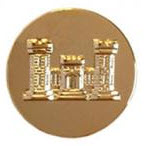 Here is an article by Charley Ijima from the Go For Broke Bulletin Archives (Vol. XLVIII No.4) October – December 1997.
Here is an article by Charley Ijima from the Go For Broke Bulletin Archives (Vol. XLVIII No.4) October – December 1997.
What was the 232nd Engineers role in World War II?
The 232nd Engineer company was a very unique outfit. This company was the only company in the 442 Regimental Combat Team that was comprised of 100% Nisei members. All the other companies had white officers in command positions.
Our company commander told us that he was given permission by the commander of the 442nd that he could pick and choose whoever he wanted from the Regiment’s roster to form this company.
At Camp Shelby, Miss., I was assigned to the 3rd Platoon, 1st Squad of the Engineers. Our manpower was majority from Hawaii. Mainland Niseis were mostly from the West Coast states. Basic training at Camp Shelby was a new experience for most of us. The climate, the people of the area, the animals and insects, the military way of life, the mixtures of men from different backgrounds and ages. All of these things required adjustments. Fear of snakes, chigger bites and sand fleas attacks are all part of the training time experiences.
After basic training, our company went to Italy and joined the 100th Infantry and the 34th Division north of Rome. We were so inexperienced, our company convoy drove right up to the battle area and into artillery fire. We suffered our first casualty during this encounter. I remember as we proceeded from the rear to the front lines, we passed large artillery guns and gradually the arms got smaller. One person on our truck made a comment, when you start hearing machine guns and rifle fires, you know you’re in the combat zone. We got our baptism that day and learned real fast how to survive.
In Italy, our company was fortunate to be attached to the Engineer Battalion of the 34th Division. We were given orientations on the various types of mines used by the German Army. We were surprised to find mines made of metal, wood, glass, cement, and even ceramic. They came in all sizes and shapes. There were land mines to disable tanks and heavy equipment. Then, there were anti-personnel mines like the “Shoe” mine and the “Bouncing Babies.” The “Shoe” mines were the smallest and they used to maim more than to kill. The “Bouncing Babies” were the deadliest. These anti-personnel mines were packed with ball bearings or chopped metal pieces and when stepped on or if wires attached to it were tripped, the inner chamber would bounce up by a charge and explode, spreading all the deadly metal fragments. Many men were killed or wounded by these mines.
Besides disarming, neutralizing mines and sweeping for mines with metal detectors, our company was involved with building by-pass roadways around blown bridges and highways. When the infantry units were advancing at a rapid pace, our engineers were assigned to provide passage for supplies and ammunition to the front and the evacuation of the wounded to the rear. Usually, these by-pass roads were left for the rear echelon engineers to construct. On occasions, bulldozers and heavy equipment were too noisy to use. Manpower was the only way to complete the job.
In the Battle of Bruyeres and the Lost Battalion, Engineers had to do a lot of work clearing the roads through the forest areas. The Germans blew large trees with explosives onto the roads to block traffic. To clear the large trunks and other debris, we had to use large, heavy, noisy, gas engine-run chain saws. These operations usually resulted in artillery shellings with great danger to the personnel working. In Vosges forest area, our engineers built miles and miles of wood-plank and log-covered roads so our equipment could get through the muddy roads. During the Lost Battalion battle, we were assigned to sweep the forestry roadway for mines and make clear so supplies and ammo could move through. Our squad was close enough to hear all the commotion during this battle. We even saw the casualties coming out from the area. A very happy day for some but a very sad one for many.
All throughout the war, many unforgettable incidents took place. In the Pisa area where we returned to Italy from France, our engineers, during push into the Po Valley, suffered four bulldozer loses, all ran over land mine and were put out of commission. One highway was so important to our offense, the engineers built an overpass over one of the disabled bulldozers so traffic could go through. In one area where the 92nd Division was assigned, our squad with a bulldozer operator and a dozen men had to clear the highway full of dead horses and men. A very stinky job. We had to throw our shoes away because of the rotten oil from the dead horses was too much to handle.
For all the bad things that we endured during the war as well as the good times we had, I am very satisfied with the end results. I think the wartime experiences made a better person of me. Charley Ijima, 232nd Engineers.

